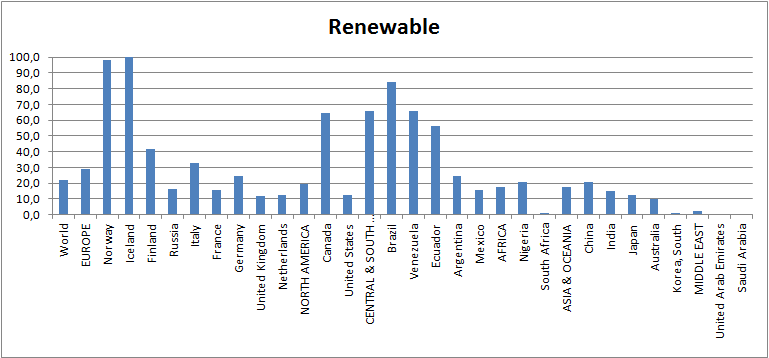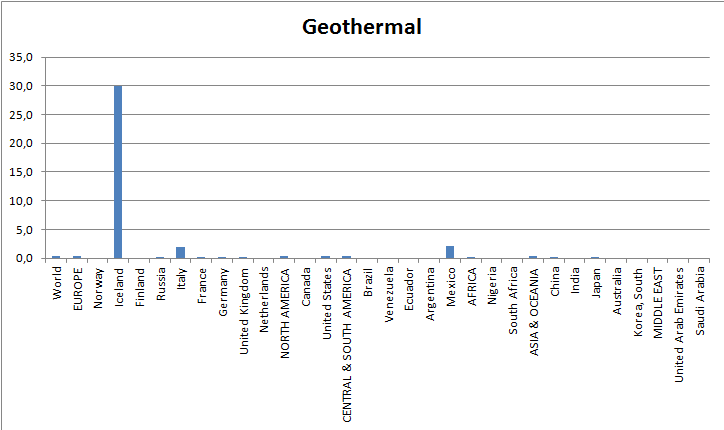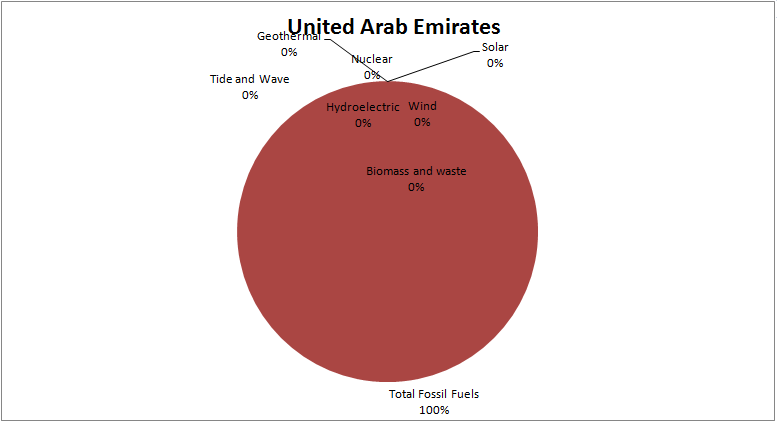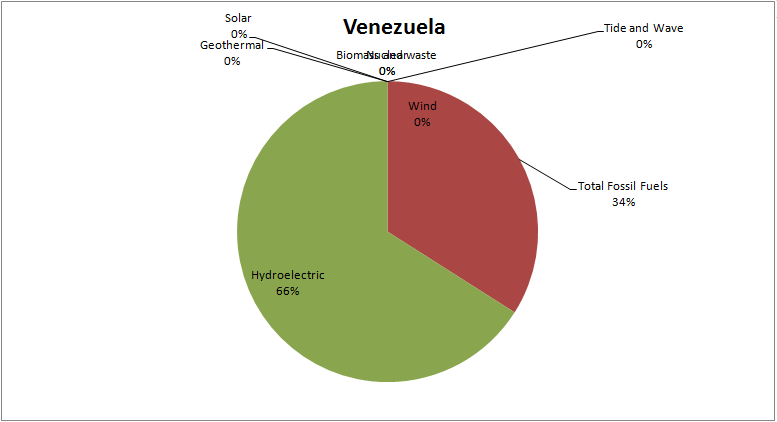From 2GreenEnergy Intern Fabio Porcu: Energy Diversification Around the World
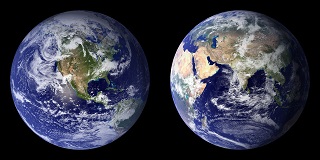
Worldwide, about two-thirds of the primary energy used to generate electricity comes from fossil fuels: coal, gas and oil. In this group the most important energy source is coal, with a share of 40%.
The electricity mix of the United States is made up of fossil fuels (68%); nuclear energy with a share of 19%, which is almost twice what we find worldwide. Even hydropower contributes significantly to power generation; renewable energy – wind, solar and biomass – in recent years they have had a remarkable progression and currently cover about 6% of generation.
But, what is the situation around the world? All the different countries, according with the resources from each territory, have different strategies concerning energy generation. Using data from U.S. Energy Information Administration (EIA), I will analyze some of the nations around the world with respect to the composition of their energy generation. 67% of energy comes from fossil fuel on a global basis. The chart here shows the percent of total energy from this source.
We can see in this chart that countries like South Africa, Saudi Arabia, United Arab Emirates and the rest of the Middle East generate almost 100% of their energy from fossil fuels, because they are countries with big reserves of oil and coal. It is interesting to see that some countries like Iceland (0.0%) and Norway (1.8%) don’t use fossil fuel for electricity generation, but they base their energy politics on renewable sources such as hydropower and geothermal.
The second low-carbon but non-renewable resource is nuclear:
As we can see from the chart, France is the country that bases its energy generation mainly on nuclear; it comprises almost 80% of their total energy. The trend around the world is to decrease the use of nuclear generation, but Venezuela, Ecuador, Saudi Arabia and many other countries are planning to start production from nuclear. In Italy, starting in 1987, every nuclear power plant has been closed due to a public referendum.
Of course, the renewable percentage is more or less opposite of fossil fuel. In fact, in the chart below we can see that Norway and Iceland have a very high percentage (98.5% and 100%), Brazil to follow with (84%), while Saudi Arabia, United Arabic Emirates and South Africa the percentage is nearly 0%.
Renewable sources include solar, wind, hydro, geothermal and biomass. Solar plants are more developed in Europe where the absence of fossil fuel forces their promotion. Italy and Germany are countries with the bigger percentage: respectively 6.7% and 4.5% of the total production.
Wind power plants cover a bigger percentage compared with solar because the technology is more developed and the cost of energy is lower. The leader in this field is Germany with 8.7%.
Solar and wind energy generation is variable, and for this reason a country cannot base their entire energy production on those sources. Hydropower and geothermal on the contrary are constant. In the charts below we can see that in Norway, Iceland, Brazil, Canada and many countries in South America the percentage of hydropower energy is significant: in Norway almost 100% of energy comes from hydropower.
Geothermal energy covers an important role only in a few countries: in those analyzed in this chart we see Iceland (29.9%) but also in the Philippines (27%), El Salvador (25%) and New Zealand (10%) as well.
From the chart we see that Finland is the country where biomass and waste has the highest percentage. Other energies as tidal and wave are present in some countries, but because of their cost, they don’t play a significant role.
The world is rapidly migrating away from fossil fuels because of the pollution that this kind of power generation causes. We are seeing a corresponding increase in of use the renewable sources, and better energy diversification around the world.





